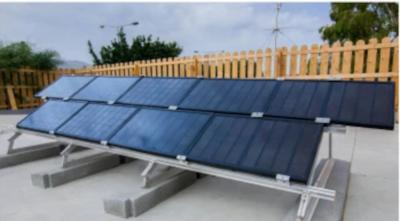Researchers at the Centre for Hybrid and Organic Solar Energy (CHOSE) of the University of Rome Tor Vergata, along with researchers at the Italian Institute of Technology (IIT) and the University of Applied Sciences in Crete (TEI), have stated that they set a new record for conversion efficiency of a perovskite photovoltaic module with an area larger than 50 cm2.
The success was achieved as part of Graphene Flagship, the 1 billion euro European project that promotes graphene-based innovation in sectors like energy, electronics, technology and medicine. Perovskites photovoltaic modules' efficiency is usually demonstrated in the laboratory on cells less than 1 cm2 in size, whereas the new test was performed on modules with an area larger than 50 cm2. The electronic and chemical properties offered by graphene have made it possible to overcome the many difficulties related to the realization of large-area perovskite solar panels.
In the study, the researchers designed a module consisting of an active perovskite layer and charge transporting layers. To make charge injection more efficient, the interface between perovskite and titania (a material employed in the cell to collect electrons) was improved by adding graphene and also using graphene oxide. This resulted in an increased efficiency from 11.6% to 12.6% of a perovskite photovoltaic module with an area of 50.6 cm2. An additional benefit provided by the use of graphene is an increased stability of the perovskite photovoltaic modules: the researchers demonstrated that the modules retained more than 90% of the initial efficiency after 1630 hours.
The possibility to produce graphene and other 2D materials in ink form is ideal for the realization of thin interfaces between different solar cell components", said one of the researchers at the Italian Institute of Technology. "This approach significantly improves the performances of solar cells, coupled with the scaling up prospective of inks production and deposition, can boost the commercialization of this technology.
The team explains that scaling the perovskite solar cells is a critical issue. Beside the quality of the materials, it is mandatory to control the uniformity of the deposition and the quality of interfaces all over the size of the module. For this reason, the introduction of 2D materials that control the interface properties and improve, at the same time, the uniformity of the deposition seems like a winning strategy that can be scaled up at the industrial level.
